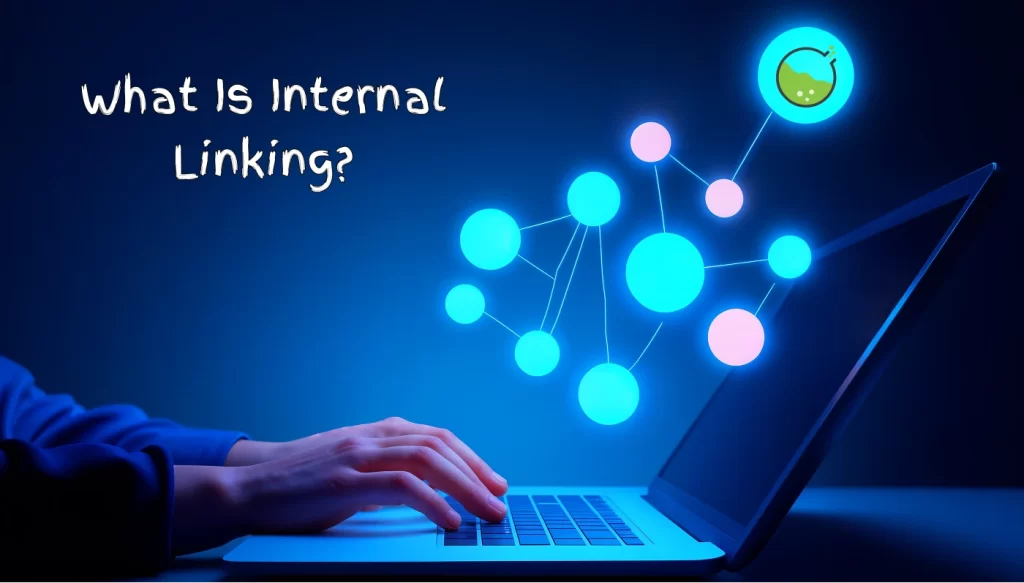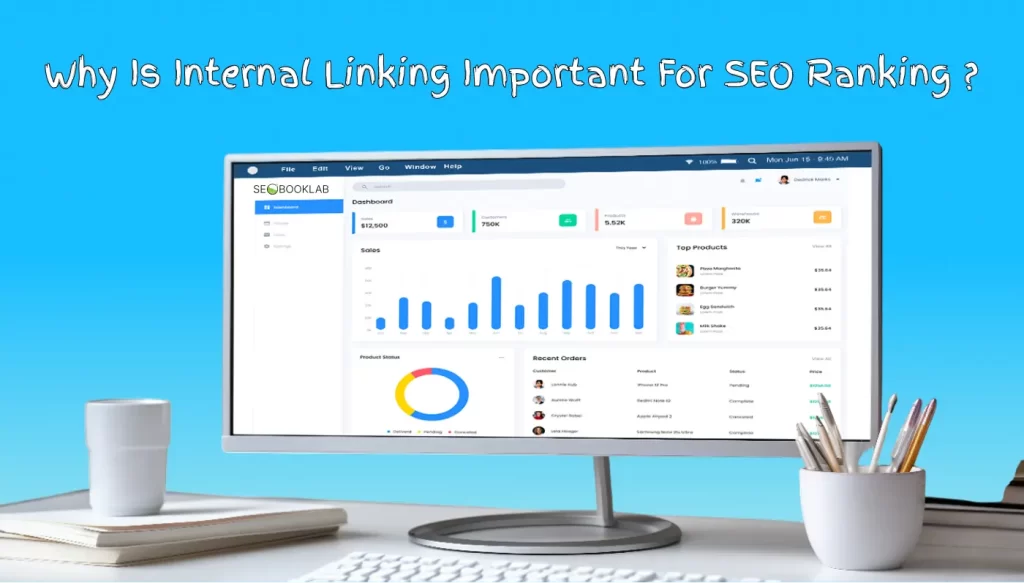7 Powerful SEO Advantages of Internal Linking

Before your content can climb the Google ranks, it needs to be found — and that starts with links. Google discovers your pages best when they are linked from somewhere else, preferably within your own site.
While technical SEO and backlinks usually steal the spotlight, internal linking is often the unsung hero, quietly holding massive ranking power that many brands leave untouched.
A smart internal linking strategy does more than simply connect pages. It builds a clear hierarchy, showcases your most important content, distributes authority across your site, boosts user engagement, and ultimately drives higher conversions and rankings.
But without a strong, deliberate plan, internal linking can become chaotic, ineffective, and even harmful to your SEO health.
In this article, we’ll break down the major advantages of internal linking and show you exactly how to use it to drive real, lasting results.

What Is Internal Linking?
Let’s start with a basic definition of Internal linking.
Internal linking is the practice of creating hyperlinks that connect one page of a website to another page within the same domain. These links guide users through related content on the site and help search engines understand the structure and hierarchy of the website.
Note: Internal links are different from backlinks, which are links coming from external websites. While internal links improve site navigation and internal SEO, backlinks help build domain authority and improve search rankings from outside sources.

Why Is Internal Linking Important For SEO Ranking ?
Internal Linking is an essential factor for Google ranking…
But why?
Links help Google discover, index, and understand the structure of your website. From a technical standpoint, smart internal linking also strengthens site architecture, making it easier for search engines and users to navigate.
Despite some challenges faced by internal linking it is a mighty way to strengthen your marketing efforts and should never be ignored.
To summarise
“Internal linking helps search engines grasp your site’s structure and the relationship between pages, improving both ranking and visibility. When links are placed strategically, they not only guide users to key content but also highlight the importance of specific pages.”
1. Enhance Navigation and User Experience
One of the main goals of internal linking is to improve navigation and user experience. A site with poor or no internal links not only struggles to get properly indexed by Google but also risks losing users who cannot easily move from one page to another.
Effective internal linking helps users discover more about your products or services without having to start a new search, making their experience smoother and more satisfying — and guess what, Google loves that too!
The longer users stay and engage with your site, the more Google sees you as an authoritative brand.
A most successful language of strong internal linking is Wikipedia, which uses two types of links:
- Contextual Links: Embedded naturally within the content to provide deeper insights.
- Related Links: Suggested at the end or alongside the content to guide users to similar topics.
2. Improved Site Engagement
Of course, you want users to spend more time on your site, and strong internal linking can help make that happen.
By creating a clear, intuitive roadmap, internal links encourage visitors to dive deeper into your site and explore more pages. When users consistently find interesting and valuable content, they’re more likely to stick around longer
After all, the average time spent by a user on a web page is 50 seconds, and if you are able to break this record, you can rank well.
3. Enhanced Conversion Rates
Building a robust internal linking strategy does more than just improve navigation — it can guide users straight toward a sale. By strategically linking relevant content, you encourage visitors to dive deeper into your funnel, boosting the chances of conversion.
Start by adding smart internal links on your homepage that lead users to key content marketing pieces.
To build an effective internal link network:
- Analyze your content from the user’s point of view — what would they want next?
- Develop content tailored to each stage of the buyer’s journey.
- Optimize pages with the right keywords for seamless linking.
- Use internal links to move users forward at their own pace, making their journey feel natural, not forced.
Done right, internal linking becomes a silent salesperson working behind the scenes!
4. Build Your Website Structure
Your website’s taxonomy helps both users and search engines understand the hierarchy and organization of your content. However, website architecture goes beyond just setting up categories — it’s about strategically connecting pages through internal linking to create a seamless user experience.
An effective structure organizes content around core topics and subtopics. For instance, linking your homepage content to your service pages — and vice versa — ensures that users and crawlers can easily navigate and comprehend your site.
Without internal links, achieving this interconnectedness would be impossible, making your site more cohesive and well-structured.
5. Improves Crawlability
Crawling is the process by which search engine spiders navigate your website to understand what your content is about.
Imagine Google begins crawling your site from the homepage. If there are no links to other pages, the journey stops there. However, if one page links to another, and that page links to another, it creates a path that makes it easy for Google to continue exploring your site.
Strong crawlability is especially important when you frequently publish new content. It ensures that new and updated pages are discovered, indexed faster, and appear more frequently in search results.
To improve crawl efficiency, follow these basic steps
Implement Strategic Internal Linking: Connect related pages naturally to guide crawlers deeper into your site structure.
Publish Organic, High-Quality Content: Regularly create valuable content that attracts both users and bots.
Improve Page Speed: Faster-loading pages help bots crawl more pages efficiently within your site’s allocated crawl budget.
Use a Clear and Logical URL Structure: Organize your URLs cleanly so crawlers easily understand your site hierarchy.
Update and Submit Your Sitemap Regularly: A fresh XML sitemap ensures new pages are quickly found and indexed.
6. Building Link Equity
It is a measure of authority and reliability passed from one page to another. Internal linking helps build link equity by connecting related pages.
For example, if you have written an article on “How Physiotherapy Can Help in Pain Management” and it is gaining wider reach, you can internally link it to another article like “Top Physiotherapists in Sydney.” As a result, that article will also gain more reach, as possibly end visitors might try to find the Physiotherapist.
That’s the whole game of internal linking — when one part of the boat rises, and they are connected, the whole boat tends to rise.
7. Signals to Google Which Keyword Needs To Be Ranked
Since you have full control over generating links, you can send a clear message to Google through internal linking about which keyword you want to rank for, by using anchor text.
Anchor text is the clickable text in a hyperlink, usually highlighted and underlined, that tells both users and search engines what the linked page is about.
By using a relevant keyword as anchor text, you instruct Google that the linked page should rank for that specific term.
For example, if you want your page on “Best Physiotherapy Treatments” to rank for a particular keyword, you should link to it using the anchor text “Best Physiotherapy Treatments,” not just “click here” or some random words.
To Conclude,
Without a seasoned team by your side, building and optimizing an internal linking strategy can feel like an uphill climb. But at SEOBookLab, our proven marketing specialists fast-track the process with data-backed suggestions that get results—fast.
Ditch the guesswork. We show you exactly which pages need a push to climb the search rankings.
Ready to get serious about internal linking? Let’s make it happen.

